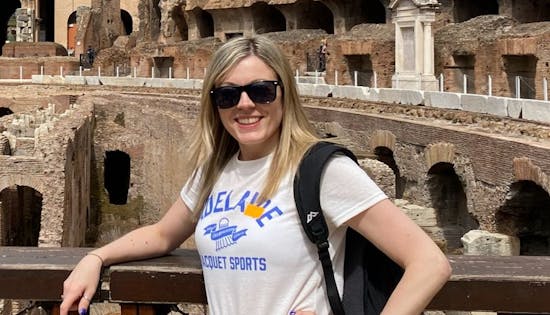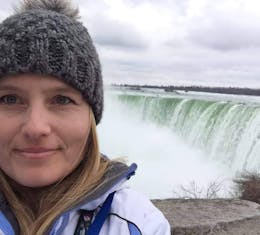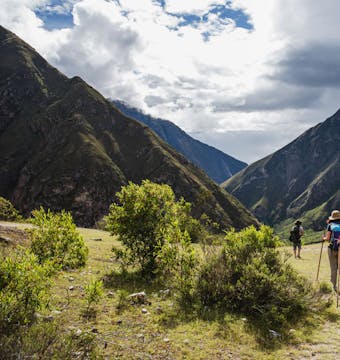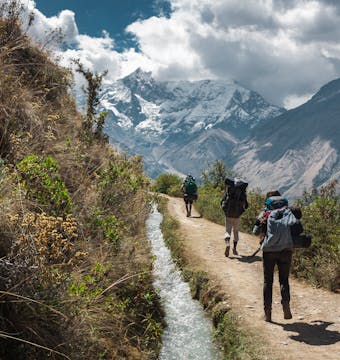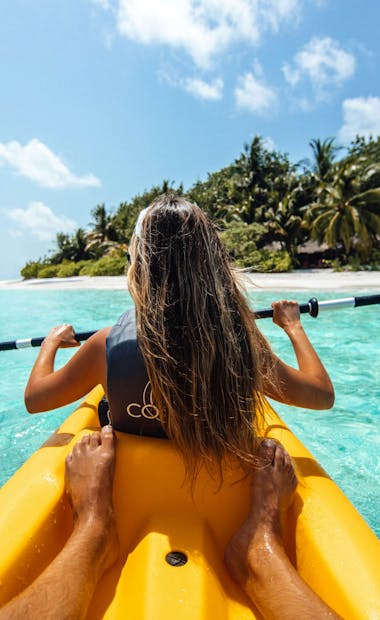Peru Tours
Peru Tours. Trek The Inca Trail, explore the Amazon and more
Popular tours
- Save10%
 View Tour
View TourClassic Inca Trail & Machu Picchu - 4 Days
- Cusco to Cusco
- Age group: 3 - 99
- Max group size: 16
Was:£621From£557 - Save6%
 View Tour
View TourThe Inca Trail & Sacred Valley - 8 Days
- Cusco to Cusco
- Age group: 12 - 99
- Max group size: 16
Was:£871From£823 - Save33%
 View Tour
View TourAbsolute Peru - 21 Days
- Lima to Lima
- Age group: 12 - 100
- Max group size: 16
Was:£3,429From£2,286 - Save17%
 View Tour
View TourMachu Picchu Adventure - 8 Days
- Lima to Lima
- Age group: 12 - 100
- Max group size: 16
Was:£1,279From£1,056 - Save30%
 View Tour
View TourAmazon to the Andes - 12 Days
- Lima to Lima
- Age group: 12 - 100
- Max group size: 16
Was:£2,049From£1,427 - Save25%
 View Tour
View TourPeru: Ancient Cities & the Andes - 14 Days
- Lima to Cusco
- Age group: 18 - 39
- Max group size: 18
Was:£1,769From£1,320
Peru Tours
Peru with its beautiful and diverse nature makes it the perfect destination for a tour of exploring or an adventure holiday. Although the country is considered tropical with its close proximity to the warm Niño current, the mountainous peak has its own climate, making it a very popular and varied destination for trekking.
Many tourists come to visit the UNESCO World Heritage site of Machu Picchu, but Peru has so much more to discover! For starters, the wildlife here is amazing, from condors to seals, and from dolphins to llamas and alpacas. Why not learn about and witness traditional life on Lake Titicaca (the highest lake in the world) and immerse yourself in the indigenous culture it has to offer.
If it’s not just Machu Picchu you’re here for and would like to experience more then Peru has so much more to offer. How does a stay in the Amazon Rainforest sound? With chances to see so many unique animals and be right in the thick of it whilst learning all there is to know about the Amazon. Or what about sandboarding in the desert? Well, in a tiny little desert village called Huacachina you are able to. There’s even chances to spot dolphins and seals in the Ballestas islands or fly over the Nazca lines, an incredible archaeological site of 2,000 year old etched geoglyphs.
Whether you want to go on an Amazon riverboat adventure and eat food fresh from the jungle, drink Pisco Sours in the amazing Cuzco or hike one of the most famous trails in the world; most of our trips are guided by locals so you’ll be in great hands to ensure you have the best adventure possible!
What are the best things to see and do in Peru?
Peru is a diverse and culturally rich country that offers a wide range of attractions and experiences for travelers. Here are some of the best things to see and do in Peru:
Machu Picchu: A visit to the ancient Inca citadel of Machu Picchu is a must. Explore the awe-inspiring ruins nestled high in the Andes Mountains, and marvel at the remarkable engineering and breathtaking views. You can reach Machu Picchu by hiking the famous Inca Trail or taking a scenic train ride from Cusco.
Sacred Valley: Discover the beauty of the Sacred Valley, located near Cusco. Explore the charming towns of Pisac and Ollantaytambo, visit traditional markets, and admire ancient Inca ruins. The Sacred Valley also offers opportunities for outdoor activities such as hiking, horseback riding, and zip-lining.
Cusco: Immerse yourself in the vibrant culture and history of Cusco, the former capital of the Inca Empire. Explore the well-preserved colonial architecture, visit the Qorikancha (Temple of the Sun), and wander through the narrow streets of the San Blas neighborhood. Don't miss the opportunity to try traditional Peruvian cuisine and browse local markets for handmade crafts and textiles.
Lake Titicaca: Venture to the highest navigable lake in the world, Lake Titicaca, located on the border of Peru and Bolivia. Take a boat tour to explore the islands on the lake, such as the Uros Floating Islands and Taquile Island, and learn about the unique traditions and cultures of the indigenous communities.
Nazca Lines: Embark on a fascinating aerial tour over the Nazca Desert to witness the mysterious Nazca Lines. These enormous geoglyphs, depicting various animals and shapes, were created by the Nazca people thousands of years ago. The best way to appreciate these enigmatic figures is from above.
Amazon Rainforest: Explore the incredible biodiversity of the Amazon Rainforest in Peru. Take a river cruise or stay at a jungle lodge to experience the rich flora and fauna, go wildlife spotting, and learn about the indigenous communities that call the rainforest home. Puerto Maldonado and Iquitos are popular gateways to the Peruvian Amazon.
Colca Canyon: Journey to the Colca Canyon, one of the deepest canyons in the world. Marvel at the stunning landscapes, spot Andean condors soaring above the canyon, and visit traditional villages to learn about the local culture and way of life.
Arequipa: Discover the "White City" of Arequipa, known for its beautiful colonial architecture made of white volcanic stone. Visit the impressive Santa Catalina Monastery, explore the historic center, and enjoy the local cuisine, including the famous rocoto relleno (stuffed hot pepper).
Huascaran National Park: For outdoor enthusiasts, Huascaran National Park is a paradise. Located in the Cordillera Blanca mountain range, the park offers incredible trekking opportunities, with snow-capped peaks, turquoise lakes, and picturesque valleys.
Peruvian Cuisine: Peru is renowned for its diverse and delicious cuisine. Indulge in ceviche, anticuchos (grilled skewers), lomo saltado (stir-fried beef), and the famous Peruvian dish, cuy (guinea pig). Don't forget to try the national drink, Pisco Sour, made from the local grape brandy, Pisco.
These are just a few highlights of what Peru has to offer. The country's rich history, stunning landscapes, and warm hospitality make it a captivating destination for travelers.
What is The Inca Trail?
The Inca Trail is a famous trekking route in Peru that leads to the ancient citadel of Machu Picchu. It is considered one of the most iconic and popular treks in the world, attracting thousands of hikers each year. The trail offers a unique opportunity to experience the stunning natural beauty of the Andes Mountains while immersing oneself in the rich history and culture of the Incas.
The classic Inca Trail is a four-day trek that covers approximately 42 kilometers (26 miles) of rugged mountain terrain. It starts at the Sacred Valley near the town of Ollantaytambo and winds its way through diverse landscapes, including cloud forests, high mountain passes, and ancient Inca ruins. The trail culminates at Inti Punku (Sun Gate), a dramatic viewpoint overlooking Machu Picchu.
Trekking the Inca Trail is a physically challenging endeavor that requires a moderate level of fitness and endurance. Hikers navigate steep ascents and descents, varying weather conditions, and high altitudes (reaching up to 4,200 meters or 13,780 feet at the highest pass). The trail is managed by the Peruvian government, and access is limited to a certain number of permits per day to preserve the environment and ensure a sustainable experience.
The Inca Trail is renowned for its archaeological sites and the sense of mystery it evokes. Along the trail, hikers encounter ancient Inca ruins, such as Wiñay Wayna and Runkurakay, which provide insights into the advanced engineering and architectural skills of the Inca civilization. The climax of the trek is the arrival at Machu Picchu, a UNESCO World Heritage site and one of the New Seven Wonders of the World. Seeing the awe-inspiring Machu Picchu at sunrise from Inti Punku is a truly unforgettable experience.
It's important to note that due to the trail's popularity and limited permits, it's advisable to book well in advance, especially during the peak season (May to September). Additionally, there are alternative treks available in the region, such as the Salkantay Trek and the Lares Trek, which offer different routes and perspectives of the Andean landscape.
The Inca Trail is not only a physical adventure but also a journey into history and culture, making it a bucket-list experience for many travelers seeking a unique and rewarding outdoor adventure in Peru.
What is Machu Picchu?
Machu Picchu is an ancient Inca citadel located high in the Andes Mountains of Peru. It is considered one of the most iconic archaeological sites in the world and is recognized as a UNESCO World Heritage site. Machu Picchu is often referred to as the "Lost City of the Incas" and attracts millions of visitors each year.
Built in the 15th century, during the height of the Inca Empire, Machu Picchu served as a significant religious, political, and cultural center. It is believed to have been the residence of Inca rulers, as well as a sacred site dedicated to the worship of their gods. The site remained hidden and unknown to the outside world until its discovery by the American explorer Hiram Bingham in 1911.
Machu Picchu is renowned for its remarkable architecture, blending harmoniously with the natural landscape. The city is composed of various structures, including temples, residential areas, agricultural terraces, and water channels. The precision of the stone masonry, the intricate design, and the strategic positioning of the buildings showcase the advanced engineering skills of the Inca civilization.
Visitors to Machu Picchu can explore the site and marvel at its beauty and historical significance. Highlights include the Intihuatana Stone, a ceremonial stone believed to have served as a solar observatory, the Temple of the Sun, the Temple of the Three Windows, and the Royal Tomb. The panoramic views of the surrounding mountains and the Urubamba River valley add to the awe-inspiring atmosphere of the site.
Access to Machu Picchu can be reached by various means, including hiking the Inca Trail, taking a train from Cusco or Ollantaytambo, or combining hiking with a shorter train journey. It's important to plan your visit in advance, as the number of visitors per day is regulated to preserve the site's integrity and sustainability.
Machu Picchu holds a special place in the hearts of travelers worldwide, as it offers a glimpse into the remarkable achievements of the Inca civilization and provides a sense of wonder and mystery that continues to captivate people from all walks of life.
Which Trek to Machu Picchu is best for me?
Machu Picchu is without a doubt the most famous landmark in Peru, and one of the most well known in the world. After all, this incredible place is a UNESCO world heritage site and one of the seven wonders of the modern world.
Seeing Machu Picchu is a bucket list trip for so many people, but how do you decide how exactly to get there? With so many treks, it’s hard to know which is the best for you. That’s why we are here to help!
We have a lot to say about this adventure, so much so we have built another page dedicated to The Inca Trail & Machu Picchu, please Click Here to visit! If you still have more questions after reading this page then please just get in touch with us!
When is the best time to visit Peru?
The best time to visit Peru largely depends on the specific regions and activities you plan to undertake. Peru's diverse geography and climate offer a range of experiences throughout the year. Here's a breakdown of the seasons and the best times to visit different parts of Peru:
High Season (May to September): This is generally considered the best time to visit Peru, especially for popular destinations like Lima, Cusco, Machu Picchu, and the Sacred Valley. The weather during these months is dry and mild, with clear skies and relatively cooler temperatures. However, it is also the peak tourist season, so expect larger crowds and higher prices. It's advisable to book accommodations and tours in advance.
Shoulder Season (April and October): These transitional months are considered shoulder seasons, offering a balance between smaller crowds and favorable weather conditions. April is the end of the rainy season, so you may still encounter some showers, but the landscapes are lush and vibrant. October marks the beginning of the rainy season, so you might experience occasional rain, but it is generally less crowded, and prices may be lower.
Low Season (November to March): This period corresponds to Peru's rainy season, particularly along the coast and in the Amazon rainforest. However, it can be a good time to visit if you don't mind occasional showers and want to avoid the crowds. It's worth noting that regions like Lima, Cusco, and Machu Picchu can still be visited during this time, and you may find lower prices on accommodations and tours. In the Amazon, the rainy season offers the opportunity to explore flooded forests and observe wildlife.
Regional Considerations: Peru's regions have distinct climates. In the highlands, including Cusco and the Sacred Valley, the dry season from May to September is ideal for hiking and outdoor activities. The rainy season from November to March may bring more rain and occasional road closures. Along the coast, including Lima and Paracas, the summer months from December to March offer warm and sunny weather, while winter months are generally overcast and cooler. In the Amazon rainforest, the rainy season from November to March creates lush vegetation and higher water levels.
It's important to research and consider the specific weather patterns and activities for the regions you plan to visit. Keep in mind that weather patterns can vary from year to year, so it's advisable to check local forecasts and be prepared for possible changes in conditions.
What is the currency of Peru and how to I access my money?
The official currency of Peru is the Peruvian Sol (PEN). Here's some information on accessing and managing your money while in Peru:
Currency Exchange: It's recommended to exchange your currency into Peruvian Soles upon arrival in Peru. Currency exchange services are available at airports, banks, exchange offices (casas de cambio), and some hotels. Banks often offer competitive exchange rates, but they may have limited operating hours, so it's advisable to check their schedules in advance. Exchange offices can be found in tourist areas and offer convenient hours of operation.
ATMs: ATMs (cajeros automáticos) are widely available in cities and towns throughout Peru. They accept major international debit and credit cards, such as Visa and Mastercard. ATMs provide a convenient way to withdraw cash in the local currency. However, be mindful of transaction fees and withdrawal limits imposed by your home bank. It's recommended to notify your bank of your travel plans to ensure uninterrupted access to your funds.
Credit Cards: Major credit cards, such as Visa and Mastercard, are widely accepted in hotels, restaurants, shops, and tourist establishments in urban areas. Some establishments may also accept American Express and Diners Club. However, it's advisable to carry some cash for smaller establishments or places that may not accept cards. Notify your credit card company of your travel plans to prevent any potential issues with card usage.
Traveler's Checks: Traveler's checks are not as commonly used as they once were, and their acceptance in Peru may be limited. It's advisable to use other forms of currency, such as cash or cards, for your financial needs.
Safety Precautions: When accessing money, it's essential to take precautions to protect yourself from theft or scams. Use ATMs located in well-lit and secure areas, preferably inside banks. Be cautious when withdrawing cash and avoid displaying large amounts of money in public. It's advisable to use reputable exchange offices or banks for currency exchange and to keep an eye on your belongings at all times.
Small Denominations: It's a good idea to carry small denominations of Peruvian Soles, as smaller establishments or vendors in remote areas may have limited change.
It's also advisable to check the current exchange rates and familiarize yourself with the local currency to have a better understanding of the value of your money in Peru.
Do I need a visa to visit Peru?
The visa requirements for Peru depend on your nationality and the purpose and duration of your visit. Here are some general guidelines:
Visa-Free Entry: Citizens of many countries, including the United States, Canada, the European Union, Australia, and New Zealand, do not need a visa to enter Peru for tourism or business purposes for stays of up to 90 days. This is applicable for tourist visits, family visits, or short business trips.
Visa on Arrival: Some nationalities that are not visa-exempt can obtain a tourist visa upon arrival at the airport in Peru. This allows for stays of up to 90 days. However, it is recommended to check with the Peruvian embassy or consulate in your country of residence to confirm the visa requirements for your specific nationality.
Visa Extensions: If you wish to stay in Peru for more than 90 days, you can apply for a visa extension at the immigration office (Superintendencia Nacional de Migraciones) in Peru. Extensions are typically granted for up to an additional 90 days, but it's important to apply before the initial 90-day period expires.
Other Visa Categories: If you plan to visit Peru for purposes other than tourism or business, such as work, study, or volunteering, you will likely need to obtain the appropriate visa in advance. These visas have specific requirements and application processes, and it is recommended to contact the Peruvian embassy or consulate in your country for detailed information.
It's important to note that visa requirements can change, and it's always advisable to check with the Peruvian embassy or consulate in your country or visit the official website of the Peruvian immigration authorities for the most up-to-date and accurate information regarding visa requirements for your nationality.
How should I budget for my trip?
The official currency of Peru is the Peruvian Sol (PEN). Here's some information on accessing and managing your money while in Peru:
Currency Exchange: It's recommended to exchange your currency into Peruvian Soles upon arrival in Peru. Currency exchange services are available at airports, banks, exchange offices (casas de cambio), and some hotels. Banks often offer competitive exchange rates, but they may have limited operating hours, so it's advisable to check their schedules in advance. Exchange offices can be found in tourist areas and offer convenient hours of operation.
ATMs: ATMs (cajeros automáticos) are widely available in cities and towns throughout Peru. They accept major international debit and credit cards, such as Visa and Mastercard. ATMs provide a convenient way to withdraw cash in the local currency. However, be mindful of transaction fees and withdrawal limits imposed by your home bank. It's recommended to notify your bank of your travel plans to ensure uninterrupted access to your funds.
Credit Cards: Major credit cards, such as Visa and Mastercard, are widely accepted in hotels, restaurants, shops, and tourist establishments in urban areas. Some establishments may also accept American Express and Diners Club. However, it's advisable to carry some cash for smaller establishments or places that may not accept cards. Notify your credit card company of your travel plans to prevent any potential issues with card usage.
Traveler's Checks: Traveler's checks are not as commonly used as they once were, and their acceptance in Peru may be limited. It's advisable to use other forms of currency, such as cash or cards, for your financial needs.
Safety Precautions: When accessing money, it's essential to take precautions to protect yourself from theft or scams. Use ATMs located in well-lit and secure areas, preferably inside banks. Be cautious when withdrawing cash and avoid displaying large amounts of money in public. It's advisable to use reputable exchange offices or banks for currency exchange and to keep an eye on your belongings at all times.
Small Denominations: It's a good idea to carry small denominations of Peruvian Soles, as smaller establishments or vendors in remote areas may have limited change.
It's also advisable to check the current exchange rates and familiarize yourself with the local currency to have a better understanding of the value of your money in Peru.
Is Peru a safe destination?
Peru is generally considered a safe destination for travelers. However, like any other country, it's important to take certain precautions to ensure a safe and enjoyable trip. Here are some tips to help you stay safe while in Peru:
Research and Plan: Before your trip, research the areas you plan to visit and familiarize yourself with local customs, traditions, and potential safety concerns. Stay informed about any travel advisories or safety warnings issued by your government.
Secure Your Belongings: Take precautions to secure your belongings, such as using a money belt or a secure bag to carry your valuables. Keep an eye on your belongings at all times, especially in crowded places or tourist areas. Avoid displaying expensive jewelry or electronics that might attract unnecessary attention.
Transportation Safety: Use reputable transportation services, especially when traveling at night or in unfamiliar areas. If taking taxis, use official taxis or arrange them through your hotel. When using public transportation, keep an eye on your belongings and be cautious of pickpockets.
Street Smarts: Be aware of your surroundings and trust your instincts. Avoid isolated or poorly lit areas, particularly at night. Stay in well-populated areas and stick to main streets. It's advisable to travel with a companion, especially when exploring remote areas or participating in adventurous activities.
Scams and Fraud: Be cautious of common travel scams, such as unofficial tour guides, overcharging, fake police officers, and distraction techniques. Be wary of strangers offering unsolicited help or trying to engage you in conversation. It's best to be cautious and maintain a level of skepticism.
Altitude Considerations: If you plan to visit high-altitude areas, such as Cusco and the Sacred Valley, it's important to be aware of altitude sickness and take necessary precautions. Stay hydrated, avoid excessive physical exertion upon arrival, and give yourself time to acclimate to the altitude.
Health and Safety Precautions: Take necessary health precautions, such as getting up-to-date vaccinations, using mosquito repellent in areas with a risk of mosquito-borne diseases, and practicing good hygiene. It's advisable to have travel insurance that covers medical expenses and emergency evacuation if needed.
Local Customs and Laws: Respect the local customs, traditions, and laws of Peru. Familiarize yourself with the local regulations, particularly regarding drug laws, cultural sites, and protected areas.
By following these general safety guidelines, being aware of your surroundings, and using common sense, you can have a safe and enjoyable trip to Peru.
The emergency number is 105.
Do I need any vaccinations to travel to Peru?
For the latest information we highly recommend contacting your GP.
It is recommended to have certain vaccinations before traveling to Peru. The specific vaccinations you need may vary depending on your personal health, vaccination history, and the regions you plan to visit within Peru. It's important to consult with a healthcare professional or travel health clinic well in advance of your trip to get the most accurate and up-to-date information. Here are some vaccinations commonly recommended for travel to Peru:
Routine Vaccinations: Ensure that you are up to date on routine vaccinations such as measles, mumps, rubella (MMR), diphtheria, tetanus, pertussis (DTaP), varicella (chickenpox), and influenza.
Hepatitis A: This vaccine is recommended for most travelers to Peru, as the risk of contracting hepatitis A through contaminated food and water is present.
Typhoid: The typhoid vaccine is recommended for travelers visiting Peru, especially if you will be staying in areas with poor sanitation or if you plan to consume street food.
Yellow Fever: Depending on the regions you plan to visit in Peru, a yellow fever vaccination may be required or recommended. The vaccine is recommended for areas below 2,300 meters (7,546 feet) elevation, including the Amazon rainforest region.
Hepatitis B: The hepatitis B vaccine is recommended for travelers who may come into close contact with blood or body fluids, have sexual contact with locals, or require medical treatment during their stay.
Rabies: If you plan to have close contact with animals or if you will be in remote areas where medical assistance may be limited, the rabies vaccine may be recommended.
It's important to note that the recommendations for vaccinations can change, and it's best to consult with a healthcare professional or travel health clinic well in advance of your trip. They will assess your individual health status, review your vaccination history, and provide personalized advice based on your specific needs and travel plans. Additionally, it's advisable to follow other preventive measures, such as practicing good hygiene, using insect repellent, and taking necessary precautions for food and water safety while traveling in Peru.
Can I drink the tap water in Peru?
In Peru, it is generally not recommended to drink tap water. While some urban areas, such as Lima and Cusco, have improved water treatment systems, the quality and safety of tap water can still be a concern for visitors, especially those with sensitive stomachs.
To avoid any potential health issues, it is advisable to drink bottled water or use water purification methods during your stay in Peru. Bottled water is widely available for purchase in supermarkets, convenience stores, and hotels throughout the country. Look for sealed bottles from reputable brands to ensure their quality.
If you prefer to purify tap water yourself, you can use methods such as boiling the water for at least one minute or using water purification tablets or filters. These methods help eliminate bacteria and other harmful organisms that may be present in the water.
Additionally, it's important to be cautious when consuming beverages with ice or consuming raw fruits and vegetables that may have been washed with tap water. Opt for cooked foods and hot beverages that have been prepared with boiled water to minimize the risk of contamination.
Taking these precautions will help ensure a safe and enjoyable trip to Peru while minimizing the chances of experiencing any water-related health issues.
Helpful information
We don’t recommend drinking tap water. Try and use filtered water or if you have to, buy bottled water. Also avoid ice in drinks as much as you can.
The Internet in rural areas is very limited but you should be fine in cities.
English is widely spoken especially in any touristy areas and the guides all speak English too of course. It’s always nice to try and learn a little Spanish though, it always goes a long way and they really do appreciate you trying!
Tipping is always appreciated, you’ll know when. We would note, if you’re taking pictures of locals, especially in the tribal areas, it's courteous to ask permission and maybe give a donation.
Respect the local culture! Cover up if going to religious sites or buildings.
We recommend trying ALL THE FOOD you can! Peruvians love their cuisine and you will find some incredible local dishes as well as modern interpretations. If you’d like to experience more of the local food, check out our Real Food Adventure Tour.
We try to ensure we work with the BEST local companies but remember, if you’re on a trip and don’t feel like taking part in an activity or continuing, you can stop. You don’t need to do anything you don’t want to!
Our guided adventures will take you to places well off the beaten track and provide experiences that most people just won’t get, with that in mind we encourage you to check out our growing selection! We have a lot of trips and you may find something you like but if not, please make contact and we can always tailor a trip for you.
Why book with The Adventure People?
Why book with The Adventure People?
You may be thinking ‘why should I book with The Adventure People?’. Here are just some of the reasons we stand out:
The Best Value
Not only are our prices usually the best in the market but our leading service coupled with the financial protections we offer mean you won’t find better value anywhere else.
Your Dedicated Travel Expert
Our travel team is the best in the business and we’re not just saying that. The moment you make an enquiry we’ll pair you with your own dedicated expert who is on hand to answer your questions, look after your booking and make sure you have a fantastic time.
No Waiting Times
We only have one phone number with no automated services. When you contact us you’re straight through to a member of our team and a human!
Financial Protection
We are ATOL certified, members of ABTA and run a Trust account for our packages ensuring you’re fully financially protected.
Flexible Payments
We offer low deposits and monthly payment plans at no extra cost.
Flights
We can add flights to any trip you book with us and we’re happy to help with Round The World tickets!
Accommodation
We work with wonderful accommodation providers and our team can quote almost any hotel in the world at the best prices.
Transfers & Extras
We can easily add airport transfers or extras to any booking. Our team will always quote the best possible price and be able to update your booking.
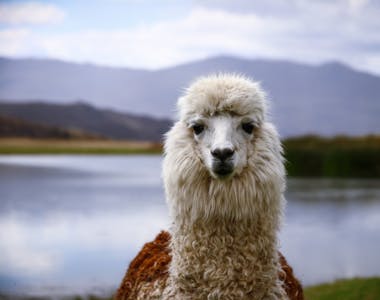
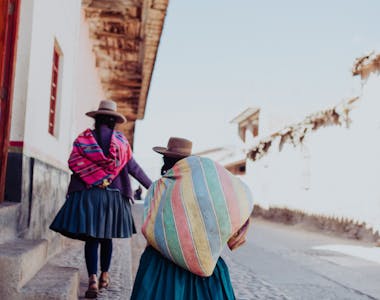
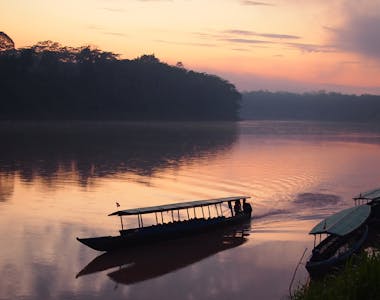
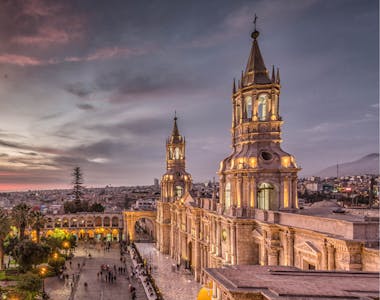
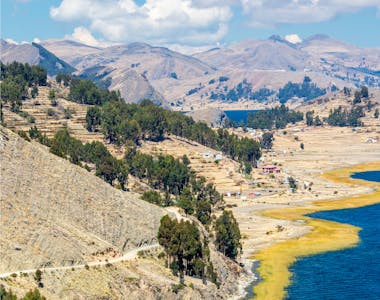
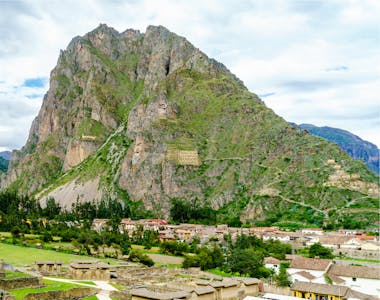

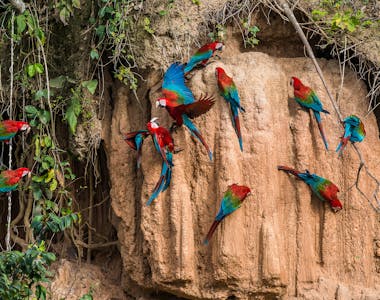
Peru Highlights
Book With Confidence
Monthly Payments
Spread the costs with no interest or additional fees
Best Price Guarantee
We won't be beaten on price. If you find this adventure at a lower price please get in touch!
Reserve now & pay later
Reserve your adventure today and pay later, free of charge
ATOL protected
Book with confidence
Hold your space today, for free
or book your trip with a deposit and then pay the rest in instalments.
Reserve your flights with us
Add flights to your booking and we'll take care of the rest. You'll get 24/7 support from our team & ATOL protection.
Speak to our experts
Call or email our expert team to find out more and help with ideas and planning.
